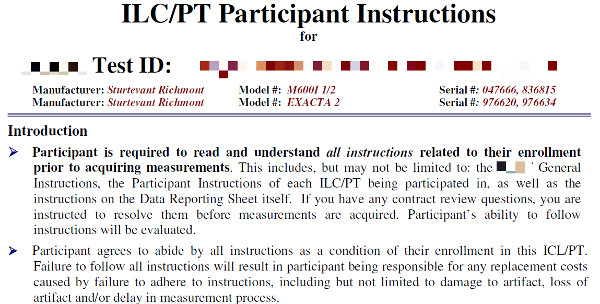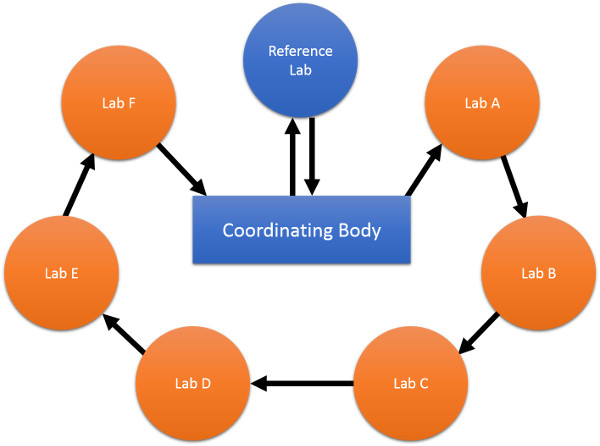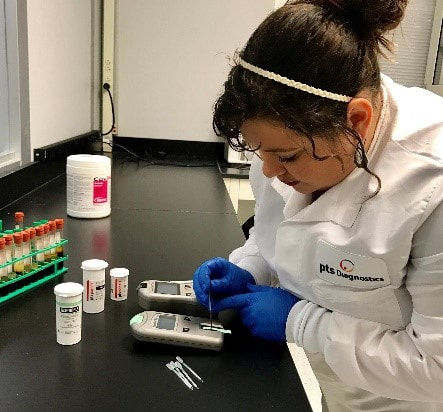Describe Proficiency Testing in the Laboratory
Identifying and defining the analytical tests the laboratory performs eg estimating biological profile trauma analysis Establishing criteria for the evaluation of proficiency tests. Along with requirements for personnel qualifications and quality control testing proficiency testing PT is one of the central safeguards of laboratory quality under the Clinical Laboratory Improvement Amendments of 1988 CLIA 1 and its regulations.

Proficiency Testing And Interlaboratory Comparisons The Ultimate Guide
Proficiency testing determines the performance of individual laboratories for specific tests or measurements and is used to evaluate laboratories continuing performance.

. A proficiency test PT is simply a method that you may use to validate a particular measurement process. 2 The CLIA regulations have often been compared to a three-legged stool resting on requirements for. Laboratory Proficiency Testing is performed by sending a specific item for testing at different laboratories.
What is proficiency testing. Denise Heaney PhD Medical and Scientific Affairs Roche Diagnostics Duration. Proficiency testing is also called interlaboratory comparison.
41 Laboratory Proficiency Testing Program The laboratorys proficiency testing program should include policies guidance and procedures for. Testing sample provided to a forensic laboratory by an approved proficiency testing provider external to the laboratory or laboratory system 18. The Laboratory Proficiency Testing market has witnessed growth from USD million to USD million from 2017 to 2022.
Proficiency Testing Programs. Proficiency Testing Process An individual sample batch is sent from an external provider to different laboratories and analyzed by the laboratories in the same manner as patient samples. This presentation will 1 Define proficiency testing in the clinical laboratory.
It provides independent evidence that the laboratory produces technically valid and reliable results. Laboratory Proficiency Testing sometimes referred to as interlaboratory comparison is used to assess the performance of laboratories by having them perform specific tests or measurements. 3 Discuss the regulatory expectations of proficiency testing in the clinical laboratory.
The IAEA provides substantial support to Member States laboratories in the field of proficiency testing of environment-related analytical methods. As this term implies proficiency testing compares the measuring results obtained by different laboratories. In a well designed proficiency test the reference value for the artifact.
Proficiency Testing is a key element in the laboratory accreditation process alongside reference materials enabling labs to monitor the quality of their analytical results. The results are then compared to detect any significant differences in results. Centers for Disease Control and Prevention CDC.
Proficiency Testing PT as it is introduced in ISOIEC 17025 is the best method for evaluation of the laboratories performance by using interlaboratory comparisons. After testing the laboratory reports its sample results back to their PT program. When proficiency testing PT challenges are missed the laboratory is presumed to have a problem with the test method and this is an opportunity to identify and fix problems in the total testing process.
Section 353 d 1 E of the Public Health Service Act requires the laboratory to treat proficiency testing. Brucella abortus RB51 during a laboratory proficiency test--United States and Canada 2007. The artifacts reference value is not known by the participating laboratory at the time of its measurement test.
In other words a proficiency test is a method used to demonstrate competency and validate a laboratorys measurement process by comparing your results to the results of a reference laboratory and other participant laboratories. Laboratories that intend to test specimens collected in Pennsylvania for blood lead erythrocyte protoporphyrin alcohol and drugs of abuse must obtain the approval of the Division of Chemistry and Toxicology enroll in the appropriate proficiency testing programs administered by the Bureau of Laboratories and continue to. Diagnostic laboratory Describe lessons learned from a recent proficiency testing sample sent to clinical and public health laboratories.
PT is also called interlaboratory. Proficiency testing determines the performance of individual laboratories for specific tests or measurements and is used to monitor laboratories continuing performance. Laboratory proficiency testing Independent proficiency tests are an important tool for laboratories to show evidence of their performance and to ensure that their analytical results can be trusted.
Qualitative schemewhere the objective is to identify or describe one or more characteristics of the proficiency test item. Proficiency testing or PT is the testing of unknown samples sent to a laboratory by an. The download section below contains a list of the Clinical Laboratory Improvement Amendments CLIA approved proficiency testing PT programs for 2022 and a list of the non-waived testing for which PT is required.
Proficiency Testing Programs. 2 Describe ways to implement proficiency testing in the clinical laboratory. Laboratory proficiency testing is an external quality and accuracy assessment process that tests unknown specimens from an outside source to ensure accurate lab.
Most sets of PT samples are sent to participating laboratories on a scheduled basis usually three times per year. With the CAGR this market is. DUBLIN May 06 2022--The Global Laboratory Proficiency Testing Market by Industry Clinical Chemistry Hematology Food Animal Feed Fish Vegetable Commercial Beverage Microbiology Water.

Proficiency Testing Is The Establishment Of The Calibration Or Testing Performance Of A Laboratory It Also Refers To An Inspection Body S Testing Per Test Iso

The Importance Of Proficiency Testing Pts Diagnostics

Summary Of Differences Between Proficiency Testing And External Quality Download Scientific Diagram

Proficiency Testing And Interlaboratory Comparisons The Ultimate Guide
Comments
Post a Comment